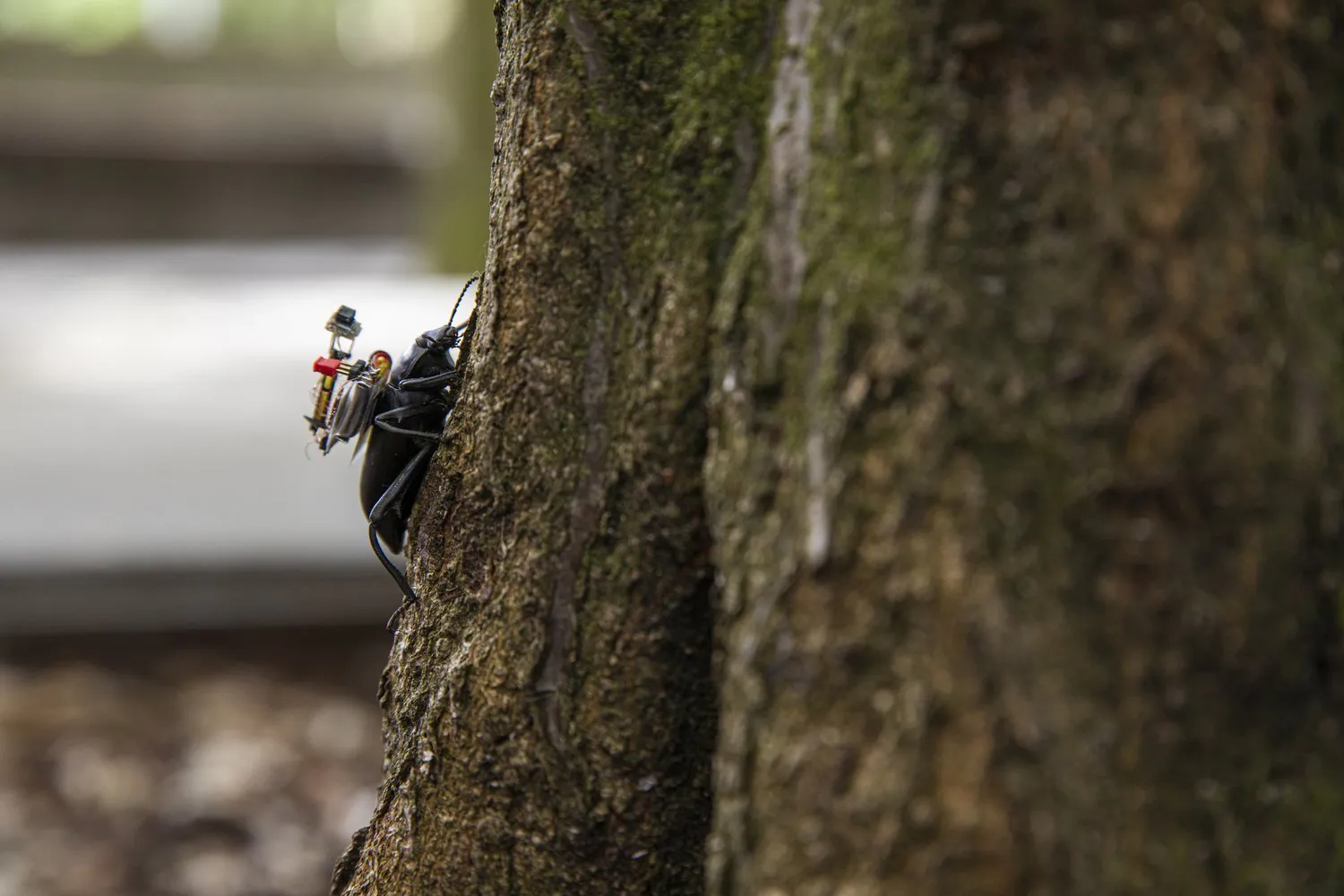Robotics
Tiny Robotic Cameras Give First-Person View of Insects

Many people throughout generations have been curious about the viewpoints of insects and small organisms, which are often portrayed in movies. However, this has never been able to be demonstrated in real-life, up until now.
Researchers at the University of Washington have created a wireless steerable camera that is capable of being placed on the back of an insect, bringing that viewpoint to the world.
Insect Camera
The camera on the back of the insect can stream video to a smartphone at 1 to 5 frames per second, and it is placed on a mechanical arm that allows a 60-degree pivot. The technology provides high-resolution, panoramic shots, as well as the possibility of tracking moving objects.
The entire system weighs around 250 milligrams, and it was demonstrated on the back of live beetles and insect-sized robots.
The work was published on July 15 in Science Robotics.
Shyam Golakota is the senior author and a UW associate professor in the Paul G. Allen School of Computer Science & Engineering.
“We have created a low-power, low-weight, wireless camera system that can capture a first-person view of what’s happening from an actual live insect or create vision for small robots” said Golakota. “Vision is so important for communication and for navigation, but it’s extremely challenging to do it at such a small scale. As a result, prior to our work, wireless vision has not been possible for small robots or insects.”
Smartphone Cameras
There are a few reasons why the researchers had to come up with a new camera rather than use the small ones that are currently present in smartphones. Those currently used are considered lightweight, but the batteries that are required would make them too heavy to be placed on the back of insects.
Sawyer Fuller is co-author and a UW assistant professor of mechanical engineering.
“Similar to cameras, vision in animals requires a lot of power,” Fuller said. “It’s less of a big deal in larger creatures like humans, but flies are using 10 to 20% of their resting energy just to power their brains, most of which is devoted to visual processing. To help cut the cost, some flies have a small, high-resolution region of their compound eyes. They turn their heads to steer where they want to see with extra clarity, such as for chasing prey or a mate. This saves power over having high resolution over their entire visual field.”
Modeled After Nature
The newly developed camera was inspired by nature, and the researchers used an ultra-low-power black-and-white camera to mimic an animal’s vision. The camera can move across a field of view with the help of the mechanical arm, which is controlled by the team applying a high voltage, causing the arm to bend and move the camera.
The camera and the arm are able to be controlled via Bluetooth from a smartphone up to 120 meters away.
Testing the Camera
The researchers tested the camera on two different types of beetles, which ended up living for at least a year following the experiment.
“We made sure the beetles could still move properly when they were carrying our system,” said Ali Najafi, co-lead author and UW doctoral student in electrical and computer engineering. “They were able to navigate freely across gravel, up a slope and even climb trees.”
“We added a small accelerometer to our system to be able to detect when the beetle moves. Then it only captures images during that time,” Iyer said. “If the camera is just continuously streaming without this accelerometer, we could record one to two hours before the battery died. With the accelerometer, we could record for six hours or more, depending on the beetle's activity level.”
According to the researchers, this technology could be applied in the areas of biology and exploration, and they hope for future versions to be solar-powered. However, the team does recognize certain privacy concerns could arise due to the technology.
“As researchers we strongly believe that it's really important to put things in the public domain so people are aware of the risks and so people can start coming up with solutions to address them,” Gollakota said.














